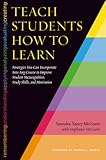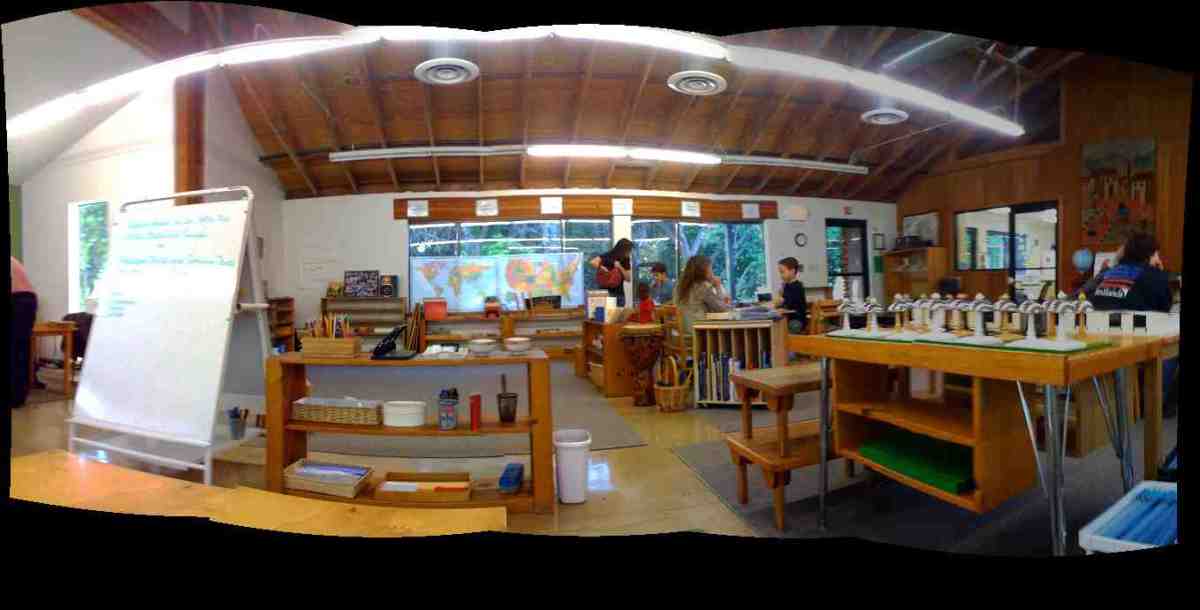Importance of Teachers Understanding Learning Preferences

Why Should Teachers Be Concerened With How Students Learn?
Although Gardner’s (1993) theory of multiple intelligences suggests that there are a variety of methods to learn material, this writer prefers the simplicity of Fleming’s (2006) VARK taxonomy— which classifies people as having four major learning preferences: visual, aural, reading/writing and kinesthetic. A tenant of Fleming’s VARK method is the thought that exposure to a non-preferred learning preference does not hinder student understanding, however it may not fully engage the learner to understanding. As such, non-preferred learning styles serve as a sort of preview or review of material, and may help aid comprehension but not ignite complete understanding. John and Rajakshmi (2011) further assert that “study skills, attitude and habits play a crucial role” in determining if effective learning will occur, meaning that the engaged students will have better academic success (p. 92). When teachers vary their teaching techniques to incorporate all the major learning styles, it encourages student success, and ultimately a joy of learning.
Not surprisingly, Fleming (2006) suggests that teachers tend to instruct classes in the manner that they themself prefer learning. For example, the teacher that prefers the reading/writing learning preference might assign bulky required reading and large writing assignments. When teachers consider the needs of the students above the ease and preference of the teacher, students can learn new material and reinforce concepts. Interestingly, Reed, Banks and Carlisle (2004) assert “students achieve higher test scores and seem to enjoy learning more when personal learning styles are considered” (p. 25). How then can teachers naturally integrate this knowledge into the classroom? Reed et. al. suggest getting to know your students personally and understanding their learning tendencies.
Discussion of Key Terms
As the term “learning preference” implies, each student has a distinct inclination for learning material in a particular manner. The VARK theory does not, however, imply that a student cannot learn through another teaching method, rather it means that a student responds best to material that is presented in the manner that most appeals to him. While several students in a classroom will likely prefer the same learning style, it is improbable that a classroom would be made up of students with all the same preference. The VARK taxonomy classifies preferences into four categories: visual, aural, reading/writing and kinesthetic. Despite the need to teach material to students in a way that matches their preference, Carson (2009) suggests that students need classrooms that teach course material in several different methods in order to truly comprehend it, noting that “no one approach or single presentation style maximizes learning for all student” (p. 96). Students benefit from frequent exposure to content through a variety of teaching methods.
In addition to a predominant learning preference, Fleming (2006) notes that many students are multimodal, meaning that they equally enjoy learning material through one method as they do another. Even if a student prefers one method to another exposure to other methods is still helpful to student comprehension.
About Learning Preferences
Although other complex learning style models exists, Fleming (2006) suggests that determining one’s preference may be as simple as considering how someone prefers to get or give directions. For example, someone who frequently describes landmarks when giving directions is likely a visual learner. Someone who writes the directions down is likely a reading/writing learner. Someone who repeats directions orally is likely an aural learner. Someone who would want to follow someone else in a car or take a trial run at traveling the route is likely a kinesthetic learner, because he prefers to experience things. Just as one method of giving or getting directions is not good or necessarily bad, no way of learning is necessarily better than another method; it all comes down to preference.
Although Fleming (2006) uses the word “strength” to describe a person’s affinity toward a preference, he is careful to avoid using the word “strength” with regard to quality of the learning preference. For example, Fleming states that the VARK questionnaire is framed to reflect the student’s decisions when learning “whether you have a skill or not, is not the focus” (p. 5). A preference may be a strength to someone, but that does not mean another person who does not use that preference is weak.
VARK Descriptions
Fleming’s (2006) VARK taxonomy categorizes learning preferences into four groups: visual, aural, reading/writing and kinesthetic. Each preferences has its own distinct tendencies, strengths and inclinations.
Visual learners think graphically and tend to underline words in text, use symbols, and different colors when taking notes; often those with a strong visual preference may be able to visualize the textbook when taking tests. Fleming (2006) notes that these students enjoy “textbooks with diagrams”, especially those with “different spatial arrangements on the page” that help make the information stand out on the page (p. 75). To play on the strengths of this preference, Fleming suggests that visual learners study for tests by drawing diagrams and turning visual cues such as acronyms into words.
Aural learners acquire information best by both hearing and speaking ideas aloud. Fleming (2006) suggests that aural learners process information by explaining ideas aloud, participating in discussions, and listening to prerecorded lectures. Aural learners best recall information when teachers use stories, analogies and tell jokes during lectures. Fleming suggests that aural learners prepare for test by reading summarized notes aloud, or discussing material with another aural learner.
Students with the reading/writing preference enjoy making lists, taking notes, reading textbooks and writing essays. Teachers help the read/write learner by using interesting words, distributing handouts and using giving definitions of words. To help students prepare for tests, Fleming suggests that students with the reading/writing preference rewrite their notes and complete extra reading assignments suggested by the teachers.
Kinesthetic learners find traditional learning environments difficult because they prefer “reality and concrete situations” to abstract situations (Fleming, 2006, p. 101). Hands-on activities, such as field trips and applied opportunities allow kinesthetic learners to use their preferences and learn information best. Fleming suggests that kinesthetic learners remember practice what they learned, perform notes, and recall previous lectures and exams; roleplaying activities also allows kinesthetic students to put their knowledge into practical application. The relationship between the teacher and the learner being so similar indicates that learning preference and teacher tendencies are not in as much opposition as this writer originally thought.
Just as some students have a strong preference toward one learning preference, some students are multimodal meaning that they enjoy learning through several methods. Other students may have a void or deficiency in a preference. According to Fleming (2006), these students “dislike” or do not use these methods. Fleming carefully notes that a void or low preference “does not mean a low level of skill”; rather it indicates a low preference for the mode (p. 13).
Identifying Personal Learning Preferences
Just as each student has a tendency to prefer one learning technique to another, teachers also have a tendency to utilize some teaching methods over another. If a teacher’s tendency is to lecture in class, this will of course reach the aural students well, and perhaps the reading/writing students who like to take notes from lectures, however students from the visual and kinesthetic reading preference may be lost and disconnected from the course material.
Teachers who understand their own learning preference and teaching tendencies can better evaluate how to alter their lesson plans to reach students with other modalities. Identifying preferences may also involve taking the online questionnaire or seeing where instructional changes can be made. For example, instead of merely lecturing during class time, a teacher could integrate visuals — such as charts and graphs— into a PowerPoint presentation. Instead of only assigning written reports, teachers could integrate more classroom discussions and oral presentations, to suite the needs of aural learners. Teachers could also implement more hands-on activities to help kinesthetic learners connect better with the course material.
Fleming (2006) notes that a teacher’s preferences often dictate how they teach a class, how they give instructions and how they expect assignments to be turned in. For example, Fleming notes that teachers with a void or deficiency of the visual preference may think that students and peers spend too much time on the appearance of a project and focus too little on the “point” of the project. Conversely, a teacher with an aural preference expects their students to contribute to classroom discussions and prefer to learn from the experts.
Plan in Action
In situations where a formal evaluation of learning preferences is not feasible, teachers can extract information more informally by bringing up a classroom discussion at the beginning of the year.
For example, a teacher could ask for a show of hands in class to a few simple learning-related questions, or ask students to turn in a 3x5 card with a list of preferences. This information on the make-up of a classroom could help a teacher gear material more appropriately, such as integrating more papers into the curriculum or by devoting more time to classroom discussion.
Identifying Student Learning Preferences
While some students may recognize they enjoy certain learning activities and do not enjoy others, not all students truly recognize their preferences and understand how they best learn. Although teachers could require students to take the VARK questionnaire, the availability of time and constricts of the format could prove difficult for some class situations. Additionally, some students may not want to provide their teacher with what may be deemed as personal information.
During a one-on-one tutoring situation, the teacher may be able to ask specific questions of the student to determine how to best proceed with review and instruction. While determining a student’s prefered learning method may take some time from instruction, it may help make the session more productive than if the teacher attempts give instruction in a method that the student has a void in.
While students in a particular major may have similar tendencies toward learning, teachers should be careful to not generalize too much. In an attempt to identify learning preferences and the effectiveness of problem based learning activities for nursing students, Alkhasawneh, Mrayyan, Docherty, Alashram and Yousef (2008) conducted a study of students in their third year of the nursing program. Ultimately Alkhasawneh et. al found that their research agreed with a previous study conducted by Murphy et al (2004), that there was little difference between the preferences of male and female students.
Similarly, Drago and Wagner (2004) were interested in how the learning preferences of online students compared with those of their traditional classroom counterparts. Based on their research, Drago and Wagner came up with several significant findings, including that online courses tended to attract students with the reading/writing and visual preference. Interestingly, Drago and Wagner suggested that meeting learning style preferences of online students was not as critical to the learning process as in the traditional classroom, likely because many students are multi-modal, and can process several forms of information and put together the pieces.

Statistics on Learning Preferences
The online VARK questionnaire is comprised of 13 questions, where participants indicate their learning preference in certain situations; students are allowed to indicate more or more than one preference to each question if desired. The survey reports scores for each learning style in numerical values in the respective “VARK” order. For example, if a student scored 2, 2, 3, 7 the visual, aural and reading/writing learning preferences respectively were preferred least, and the kinesthetic modality was preferred most.
Fleming (2006) reports that about 40% of respondents had a predominately single learning preference while the other 60% were multimodal, meaning that they preferred more than one learning preference (p. 11). Fleming further reports that about 15% of respondents were bimodal— meaning that they preferred two modes— about 12% were trimodal— meaning that they preferred three modes— and 32% used the four learning styles equally (p. 10). When compared to other VARK survey results, these statistics bear generally statistically true with other adult learners.
Interestingly,Fleming (2006) also compares the preferences of students to teachers and found very similar results between the two groups. For example, both student and teacher groups registered at a 15.2% of the visual preference tendency (p. 10). Similarly, students registered a 22.9% at the aural preference and teachers registered at 22.3% tendency (p. 10). These findings depicted those who had more than one preference for learning, also known as being multimodal.
Nuances of Learning Preferences
Barney, Brown-Sederberg, Collins, Griggs, Iannacci and Keith (2009) suggest that when students understand their learning preference they might have more opportunities for educational success, since they can alter their study habits to suit their strengths. Interestingly Fleming (2011) notes that knowing one’s LP does not necessarily affect the learning process, possibly stating:
Merely knowing that you learn best by writing does not mean that you will use only that mode for your learning. Many learners copy the learning modes of successful peers instead of using their own preferences. [For example] knowing your weight does not make you take action to reduce (or increase) it. It is the action after "knowing" that determines whether there is a useful link between learning and knowing your VARK preferences. (Vark-Learn.com, 2011).
Essentially, students and teachers must put the knowledge of learning preference into practical application in order for the knowledge to be truly successful. Reed et. al (2004) suggest that creating lesson plans that suit all learning styles “is not a cure-all; rather, it is an important element that impacts the learning environment” (p. 27).
Implications of Learning Preferences
Just as teachers in the traditional classroom have a responsibility to reach as many students as possible, teachers in the online classroom have a responsibility to provide different teaching methods to their students. Craciun and Dumitru (2011) note that “the more comprehensive, voluminous and various [instruction] is, the more new knowledge can be integrated and applied” by students (p. 3). Similarly, Rovai and Grooms (2004) suggest that online instructors do not necessarily need to consider the learning needs of their online students, but that they should vary assignments to create an equitable learning environment (p.43). Researchers agree that teachers should look to include ‘active learning’ assignments that help create meaningful educational experiences and engage learners.
When teachers consider the learning needs of their students it allows for a more “engaging and relevant lessons” notes Barney et. al (2009, p. 55). Although Jack, Kenkare, Saville, Beidler, Saba, West, Hanemann, and van Aalst (2010) researched a different learning preference taxonomy than VARK, they concluded that matching faculty and students together who had similar preferences creates an “ideal learning environment” because students related better to the teacher and coursework (p. 294). While Black (2004) wrote an article geared toward medical professionals, his suggestion of writing down patient preferences in a chart works similarly with teachers in the grade book. Knowing and understanding your student’s preferences may help when working one-on-one or when giving instructions for an assignment. For example, for a student with aural preferences you may need to repeat assignment instructions aloud, using common non-jargon words for best comprehension. Similarly, students with a read/write preference may want you to provide a written list of instructions or a sample document for their benefit.
Opportunities for Further Research
Although McClellan and Conti (2088) suggest that mature adults are more capable of facilitating personal learning than younger students, this writer wonders how LP and life experience factor into teaching people of varied learning inclinations. Of course since the differences in level of content taught to a middleschooler and an adult learner are so different, it may be difficult to determine the relationship between learning preferences and motivation to learn with regard to ways of learning. For example, McClellan and Conti note that adult learners prefer learning things that apply to them immediately, whereas younger students like to learn for learning’s sake. This writer suggests that further opportunities for research lie in comparing the preferences of older and younger students, and adaptability to voided preferences between the two age groups.
What's Your Prefered Learning Style?
Summary/Conclusions
Dunn (2009) notes that “students learn best when teachers present new material through main perceptual preferences and reinforce that material through secondary preferences. When teachers accommodate different learning preferences, learner motivating increases” (p. 30). All effective teachers want their students to not only understand concepts, but ultimately succeed educationally. The theory of learning preferences and varied learning theories has far-reaching application than just presentation methods, assigning grades and delivering assignments in a classroom. School administrators as well as coaches on the field can all glean information from this theory on how to better relate to others and learn how to better teach and train and teach their subordinates.
References
Alkhasawneh, I.M., Mrayyan, M.T., Docherty, C., Alashram, S. & Yousef, H.Y. (2008). Problem-based learning (PBL): Assessing student learning preferences using VARK. Nurse Education Today (28), 572-579. doi: 10.1016/j.nedt.2007.09.012
Barney, S., Brown-Sederberg, J., Collins, E., Griggs, L., Iannacci, L., & Keith, S. (2009). Varying pedagogy to address student multiple intelligences. Human Architecture: Journal of the Sociology of Self-Knowledge, 7(1), 55-60.
Black, J.M. (2004). Assessing learning preferences. Plastic Surgical Nursing, 24(2), 68-69.
Carson, D. (2009). Is style everything? Teaching that achieves its objectives. Cinema Journal, 48(3), 95-101. doi: 1876730441
Craciun, B. & Dumitru, S.B. (2011). Knowledge management— The importance of learning theory. Journal of Knowledge Management, Economics and Information Technology 7, 1-8.
Drago, W.A. & Wagner, R.J. (2004). VARK preferred learning styles and online education. Management Research News. (27)7, 1-13.
Dunn, J.L. (2009). Using learning preferences to improve coaching and athletic performance: are your players or students kinesthetic learners? Visual? Multimodal? Knowing who is which will help you coach or teach effectively. The Journal of Physical Education, Recreation & Dance (80)3, 30-37.
Fleming, N. (2006). Teaching and learning styles: VARK strategies. The Digital Print and Copy Centre: New Zealand.
Gardner, H. (1993). Frames of mind: The theory of multiple intelligences. Basic Books, New York.
Jack, M, Kenkare, S., Saville, B., Beidler, S., Saba, S., West, A., Hanemann, M. & van Aalst, J. (2010). Improving education under work-hour restriction: Comparing learning and teaching preferences of faculty, residents, and students. Journal of Surgical Education (67)5, 290-296. doi: 10.1016/j.jsurg.2010.07.001
John, C., Rajalakshmi, & Suresh, K. P. (2011). Fostering study skills, attitudes and habits among students using the multiple intelligences approach. Language In India, 11(10), 92-109.
McClellan, J., & Conti, G. (2008). Identifying the multiple intelligences of your students. Journal of Adult Education, 37(1), 13-32D. doi: 1593464571
VARK: A Guide to Learning Styles. (2011). What’s New? Retrieved on June 16, 2012 from http://www.vark-learn.com/english/page.asp?p=whatsnew
Rovai, A., & Grooms, L. (2004). The relationship of personality-based learning style preferences and learning among online graduate students. Journal of Computing in Higher Education, 16(1), 30-47. doi:1975935191









